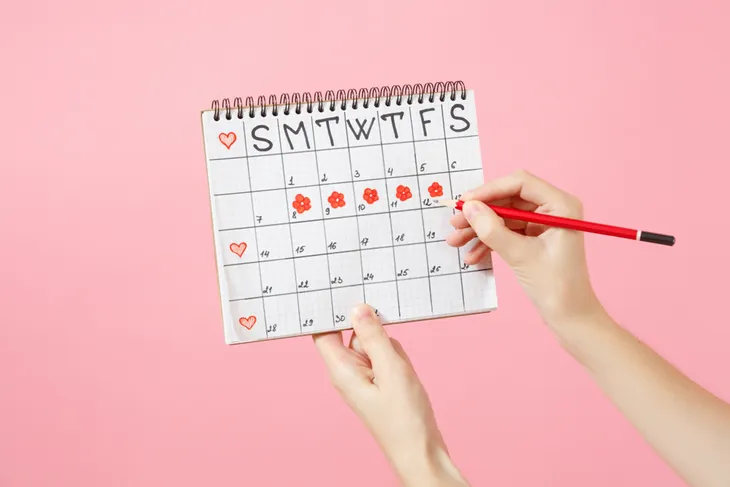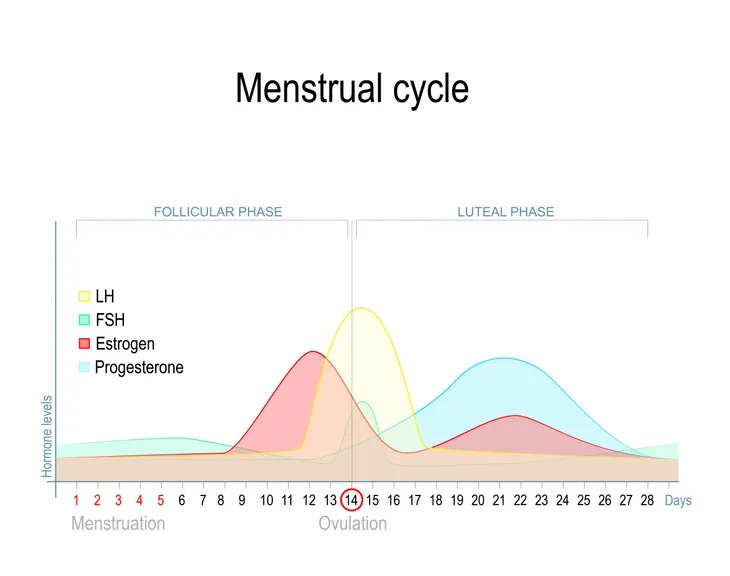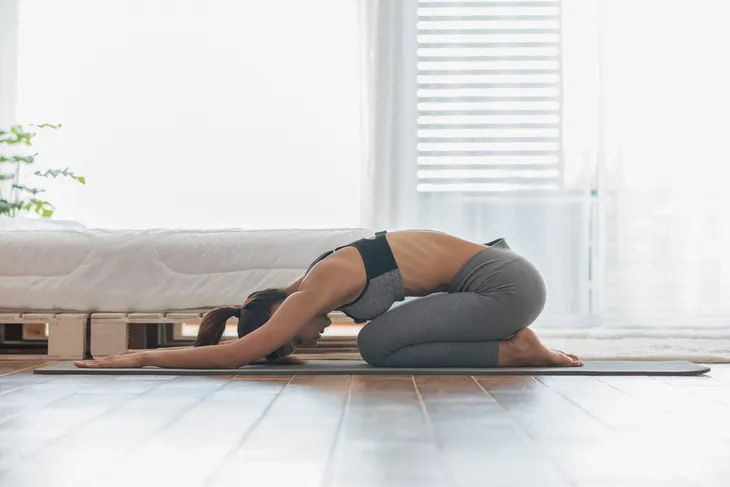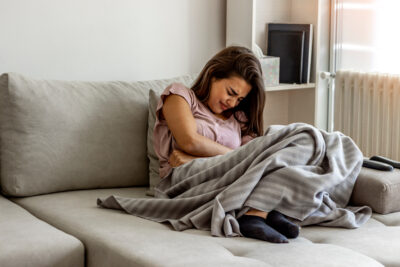Anyone who has experienced symptoms of premenstrual syndrome (PMS), knows too well how crippling the symptoms can be. Mood swings, bloating, cramping, and cravings are typical symptoms one might experience. Unfortunately, too many people joke about PMS, especially when they don’t understand it. But the fact is, PMS is nothing to joke about.
Around 85-percent of menstruating individuals experience PMS symptoms. For some, PMS might be a minor annoyance but for others, it can be absolutely debilitating. This is why understanding what it is and why it happens is so important. In an effort to better understand it, let’s uncover everything there is to know about PMS, including the common symptoms, causes, and treatment options available.
What Is PMS?
Premenstrual syndrome also referred to as PMS is a combination of emotional and physical symptoms an individual will experience after ovulation but before the beginning of their menstrual period. The symptoms typically start about 5 to 11-days before menstruation and usually go away once menstruation starts.
It’s important to point out, not every menstruating individual will experience symptoms of PMS. However, others may experience mild symptoms and some may even experience downright crippling symptoms that interfere with their daily activities.
Who Gets PMS and Is It Common?
The symptoms of PMS can happen to any menstruating individual. So how common is it? While the estimates vary, the Office on Women’s Health says, “as many as three in four women say they get PMS symptoms at some point in their lifetime.”
A study reported around 75-percent of all premenopausal females experience at least one PMS symptom, while only 8 to 20-percent meet the criteria for a diagnosis of PMS. To be diagnosed, the symptoms must interfere with some normal daily activities, appear 5-days before the period starts and end within 4-days after a period starts, and must have symptoms for at least 3-months.
Physical Symptoms of PMS
Symptoms can be different for everyone and they can range from mild to severe. Some of the common physical symptoms of PMS include food cravings, oily skin, acne, and other skin changes.
But that’s not all, some individuals may also experience weight gain, abdominal bloating, menstrual cramps, constipation, or diarrhea. Headaches, fatigue, and tender or swollen breasts are also common too.
Psychological Symptoms of PMS
PMS symptoms aren’t only physical, they can be psychological too. Some common emotional symptoms you may experience are low mood, irritability, anger, depression, anxiety, or mood swings.
Other common psychological symptoms include feeling tearful, crying, social withdrawal, difficulty concentrating, decreased libido, and sleeping problems such as insomnia.
Severe PMS Symptoms
First, let’s note severe PMS symptoms are rare. A small percentage of women (around 3 to 8-percent) may experience severe symptoms of premenstrual dysphoric disorder (PMDD). PMMD is an extension of PMS, and while they both share physical and psychological symptoms, PMDD causes extreme mood shifts that may disrupt normal daily activities and can even damage relationships.
Common symptoms of PMDD include sadness or hopelessness, anxiety, and anger with extreme mood swings. An individual with PMDD may also experience depression, crying spells, panic attacks, insomnia, binge eating, painful cramping, and a lack of interest in normal daily activities.
How Do You Know It’s PMS?
Not everyone realizes their symptoms are related to their menstrual cycle. This is especially common if the individual experiences irregular cycles. So how do you know if your symptoms are from PMS?
The best way to determine if the symptoms are from PMS is to keep a journal of your symptoms. This will help you establish patterns. If the same symptoms occur around the same time of the month, each month, and during the same time of your menstrual cycle, then they’re likely caused by PMS. If not, you could be experiencing symptoms of another underlying cause.
Causes
Unfortunately, the exact cause of PMS is unknown. However, researchers believe a change in hormone levels (specifically estrogen and progesterone) that happen a week or two before menstruation likely plays a role in the symptoms of PMS.
Your estrogen and progesterone levels decrease drastically after ovulation and this may affect your serotonin levels. Serotonin is the brain chemical that helps regulate mood, appetite, and sleep. Keep in mind, changing hormone levels may affect some individuals more than others which is part of the reason why it’s difficult to define the exact cause of PMS.
How PMS Changes With Age
If you experience symptoms of PMS in your 20s will they change as you grow older? The office on Women’s Health says, yes! The source notes, “PMS symptoms may get worse as you reach your late 30s or 40s and approach menopause and are in the transition to menopause, called perimenopause.”
Individuals who experience mood changes due to changes in hormone levels during their menstrual cycle may be more susceptible too. As you approach menopause, your hormone levels can change unpredictably which can cause mood changes. However, note that PMS will stop after menopause.
PMS Treatment
Treatment for PMS will differ based on the specific symptoms the individual experiences. The good news is, most mild symptoms can be treated with the help of over-the-counter (OTC) medications, dietary changes, and lifestyle changes. Let’s dive deeper into these next.
Medication
If you experience painful symptoms such as headaches or abdominal cramping then you may find relief from OTC medications. You can consider taking pain relievers such as acetaminophen or nonsteroidal anti-inflammatory drugs for headaches, cramps, and muscle pain.
Further, diuretics may help relieve bloating and breast soreness. Keep in mind, if your PMS symptoms are severe and you don’t find relief from OTC medications, then you’ll need to talk to your doctor. They may recommend hormonal birth control to reduce your symptoms or prescribe other medications to help ease mood-related symptoms.
Gentle Exercises
You may also find some relief by doing gentle exercises such as walking, jogging, biking, or swimming. A study examined college-age women who engaged in 1.5-hours of aerobic exercise each week.
The results showed the participants saw improvements in physical PMS symptoms including, bloating, flushing, nausea, constipation, diarrhea, swelling of breasts, and increased appetite. Keep in mind, external factors such as nutrition, sleep, and living environments could have impacted the results as well. Nonetheless, exercise is good for your health anyway so it’s worth giving it a try!
Relaxation Techniques
Relaxation techniques may be especially beneficial for those who experience mood changes. There are many ways to relax and reduce stress including taking a bath, going for a walk, or writing in a journal.
You may also benefit from practicing yoga or tai chi. Finally, stretching, talking with a close friend, or talking with a therapist may also help regulate your emotions.
Dietary Changes
Dietary changes may also help reduce some of your PMS symptoms. For example, magnesium is an essential nutrient that may help relieve migraines. You can find magnesium naturally in foods like leafy greens including spinach and kale.
Further, fatty acids found in foods like fish, nuts, and green vegetables may help reduce abdominal cramps. Finally, calcium is an essential nutrient for healthy bones but it also helps regulate food cravings, sleep, and moods. Some great natural sources of calcium include dairy products, leafy greens, and fortified foods.
When to See Your Doctor
Dealing with PMS symptoms is never enjoyable, but thankfully most mild symptoms can be treated with the help of OTC medications, dietary changes, and lifestyle changes. That said, if your symptoms interfere with your daily life or don’t go away it’s time to see your doctor.
Your doctor will first need to rule out other medical issues such as anemia, endometriosis, irritable bowel syndrome (IBS), and thyroid disease. Keep track of your symptoms and menstruation every month and share this information with your doctor. PMS is likely the cause of your symptoms if they occur around the same time every month.

















